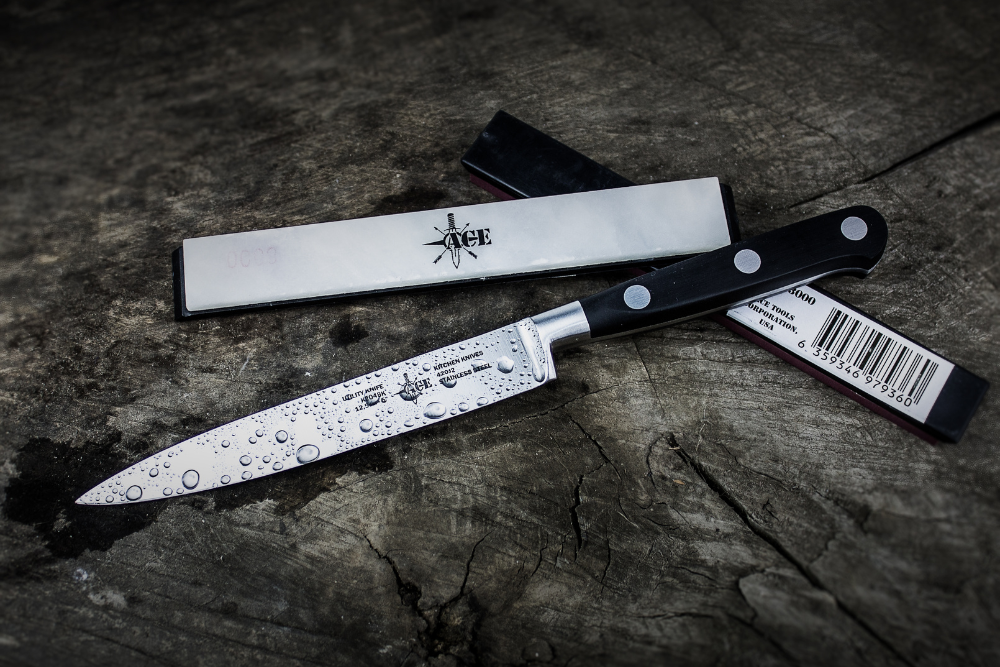A knife with a holster is an essential tool for outdoor enthusiasts, survivalists, hunters, and professionals who require a reliable cutting instrument that is easily accessible. The holster provides a secure way to carry the knife, ensuring safety, convenience, and longevity of the blade. This guide explores different aspects of knife with holster including their types, materials, usage, maintenance, and purchasing considerations.
Types of Knives with Holsters
Knives come in various shapes, sizes, and functions, each designed for specific purposes. Some common types include:
1. Fixed Blade Knives
Fixed blade knives are sturdy, strong, and ideal for heavy-duty tasks. They are commonly used for hunting, survival, and tactical purposes. These knives require a durable holster to ensure safe carrying.
2. Folding Knives
Folding knives have a hinge mechanism that allows the blade to fold into the handle. They are compact and easy to carry, but they usually do not require a separate holster since they come with built-in locking mechanisms.
3. Tactical Knives
Tactical knives are designed for military and law enforcement applications. They often feature additional tools such as glass breakers and serrated edges. A well-fitted holster is crucial for quick deployment in critical situations.
4. Hunting Knives
These knives are specifically crafted for skinning and processing game. They often come with leather or synthetic holsters that protect the blade while in the field.
5. Survival Knives
Survival knives are versatile tools used in outdoor adventures and emergency situations. They usually feature a strong blade, serrations, and additional survival tools such as fire starters. A holster ensures easy access when needed.
Materials Used for Knives and Holsters
The materials used in the construction of both the knife and holster determine their durability, functionality, and overall quality.
Knife Blade Materials
- Stainless Steel: Corrosion-resistant, durable, and requires minimal maintenance.
- Carbon Steel: Sharp and strong but prone to rust if not properly maintained.
- Titanium: Lightweight and rust-resistant, though not as sharp as steel options.
- Ceramic: Extremely sharp and lightweight, but fragile and prone to breaking.
Knife Handle Materials
- Wood: Traditional and aesthetically pleasing but requires regular maintenance.
- Rubber: Provides a secure grip and shock absorption.
- G10 (Fiberglass Composite): Lightweight, strong, and water-resistant.
- Metal (Aluminum or Stainless Steel): Durable and solid, though heavier.
Holster Materials
- Leather: Classic and durable, but requires conditioning to prevent cracking.
- Nylon: Lightweight and resistant to water, but less durable than leather.
- Kydex: A hard plastic that offers excellent retention and durability.
- Plastic/Polymer: Affordable, lightweight, and resistant to wear.
Uses and Benefits of a Knife with Holster
A knife with a holster provides several advantages, making it a practical addition to any toolkit.
1. Safety and Protection
A holster prevents accidental cuts and injuries by keeping the blade securely stored when not in use.
2. Accessibility and Convenience
A properly designed holster allows for quick and easy access to the knife, which is crucial in emergency situations.
3. Prolongs Knife Longevity
A holster protects the blade from environmental factors such as moisture, dirt, and impact damage, extending its lifespan.
4. Versatility and Portability
Holsters allow knives to be carried on belts, boots, or backpacks, making them easy to transport during outdoor adventures or work activities.
How to Maintain a Knife and Holster
Proper maintenance ensures the longevity and effectiveness of both the knife and its holster.
Knife Maintenance
- Regular Cleaning: Wipe down the blade after each use to remove dirt and moisture.
- Sharpening: Use a whetstone or sharpening tool to keep the edge sharp.
- Lubrication: Apply oil to prevent rust and ensure smooth blade movement.
- Proper Storage: Store the knife in a dry place to prevent corrosion.
Holster Maintenance
- Leather Holsters: Apply leather conditioner to keep them soft and prevent cracking.
- Nylon and Kydex Holsters: Clean with soap and water to remove dirt and grime.
- Inspect for Wear: Check for loose stitches, cracks, or weakened retention systems and replace if necessary.
Choosing the Right Knife with Holster
When selecting a knife with a holster, consider the following factors:
1. Purpose
Determine the primary use of the knife, whether it is for hunting, survival, tactical operations, or everyday carry.
2. Blade Size and Type
Choose a blade size that suits your needs. Longer blades offer more cutting power, while shorter blades provide better control.
3. Handle Comfort
Ensure the handle is ergonomically designed and provides a secure grip.
4. Holster Fit and Retention
A good holster should securely hold the knife while allowing easy access when needed.
5. Material Quality
Opt for high-quality materials for both the knife and holster to ensure longevity and performance.
Conclusion
A knife with a holster is an invaluable tool for various applications, offering safety, accessibility, and durability. Choosing the right combination of knife and holster depends on individual needs and preferences. Proper maintenance will ensure long-lasting performance, making it a reliable companion for outdoor adventures, tactical operations, or everyday utility tasks. Investing in a high-quality knife and holster set is essential for efficiency and safety in any situation.
